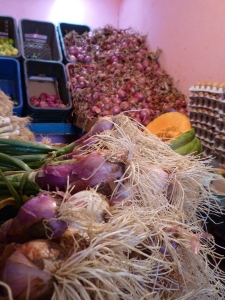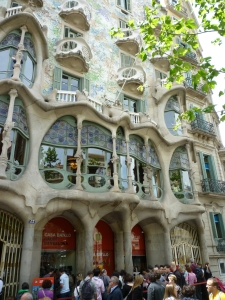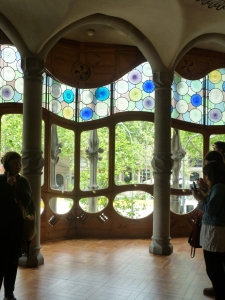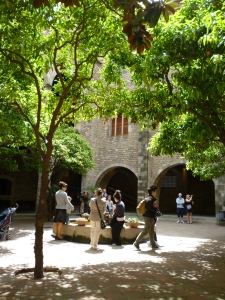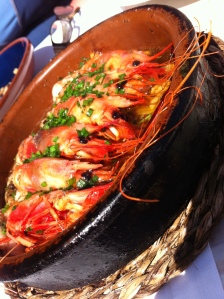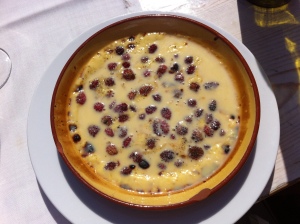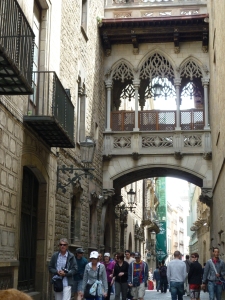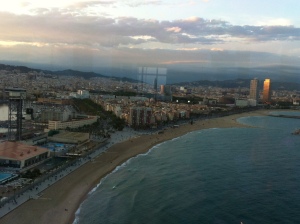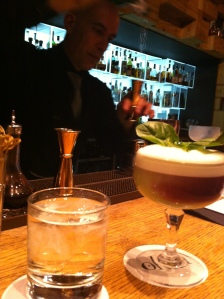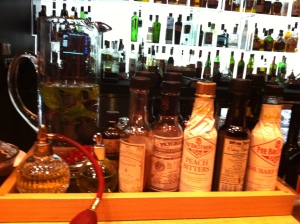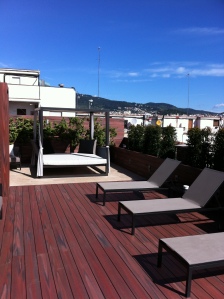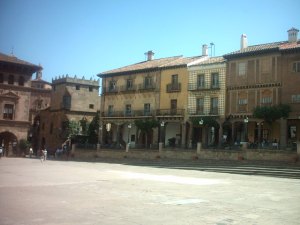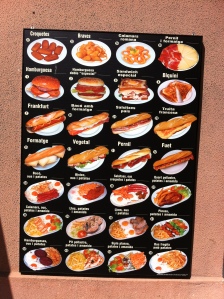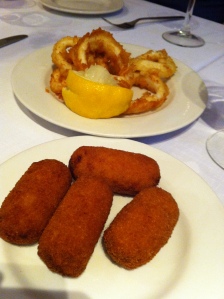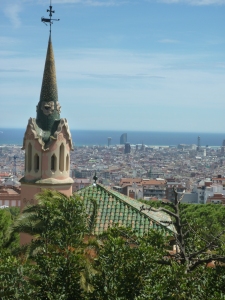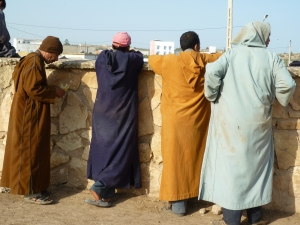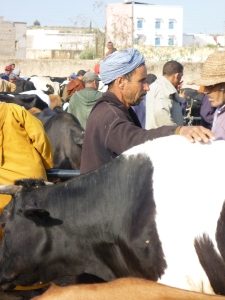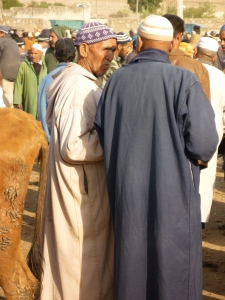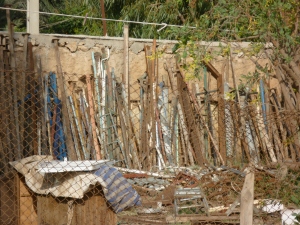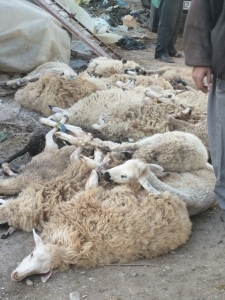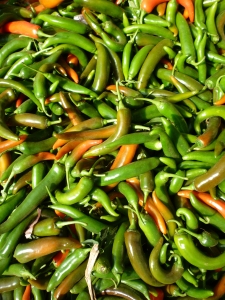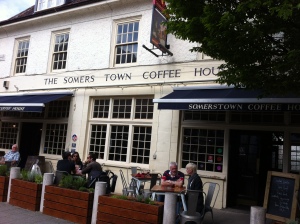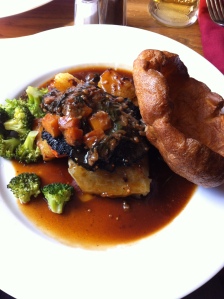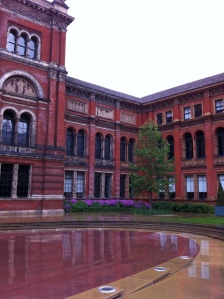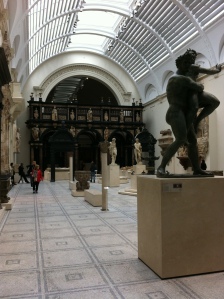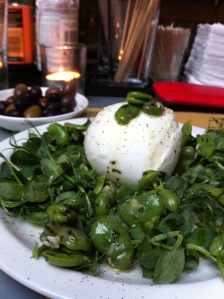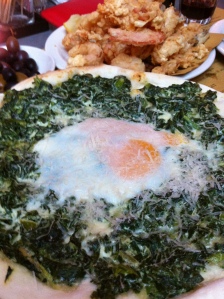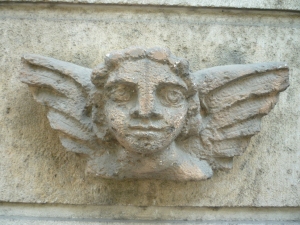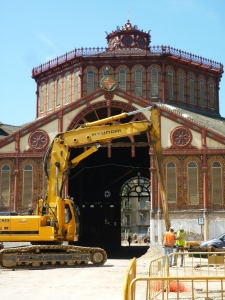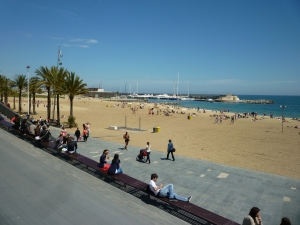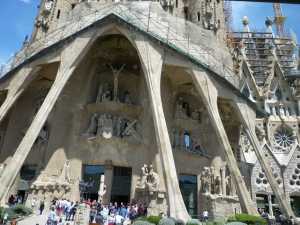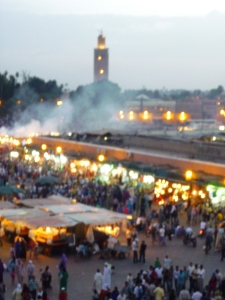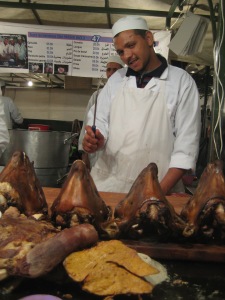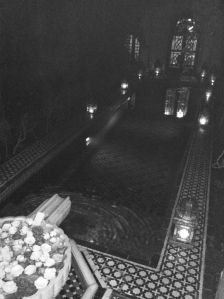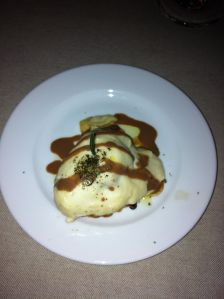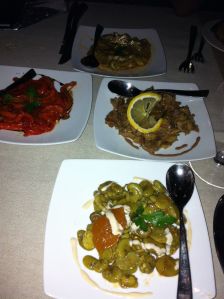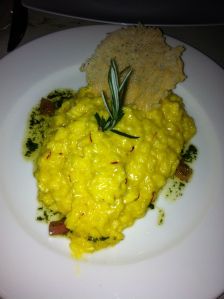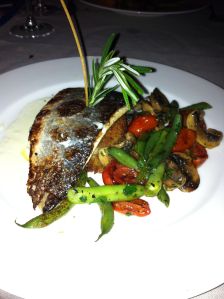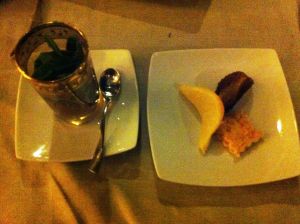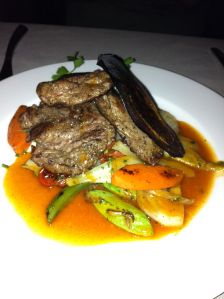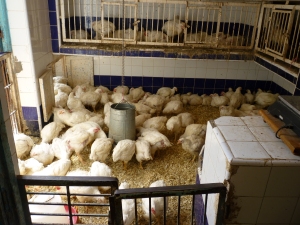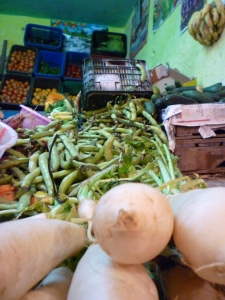I lived in Brussels for 5 years and try to get back a couple of times a year to catch up with friends and former colleagues. I was there twice in June checking out the changes and re-visiting old haunts.
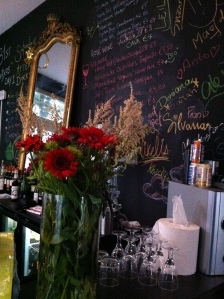
serving expats, Eurocrats and locals alike – all are welcome at Britxos!
(c) Lynn Sheppard
Brussels has a reputation for being boring and full of office blocks and Eurocrats. Those who know it better know it is famous for the Grand Place, the Atomium, moules frites, chocolate and beer. Once you’ve ticked off the sights, however, I recommend you get out into the neighbourhoods around the city centre and live like a local. Inevitably, this will involve considerable amounts of eating excellent food, drinking wonderful booze and – weather permitting – people watching from café terraces. If that sounds like your kind of city, read on!
The ‘hood
The neighbourhoods in Brussels are not particularly logically demarcated, but they are all easy to reach on public transport (bus, metro, tram). The areas of St Gilles (around the golden-roofed town hall and the Parvis de St Gilles) and Ixelles (around Porte de Namur, Place Flagey and the Chatelain) are full of neat squares, buzzing café life and fabulous fin de siècle Art Nouveau architecture.
Around the St Gilles commune (townhall)
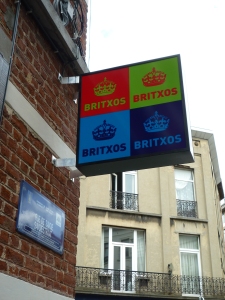
Britxos in St Gilles
(c) Lynn Sheppard
Every Friday during the summer, apéros urbains organise after-work open air pop-up bars around the city. The location changes each week. In addition to these, in St Gilles, there is a regular Friday night apéro on the square in front of the town hall. While you’re in the ‘hood, grab a bite to eat at newly opened Britxos – a kind of globally inspired tapas bar with regular events, themed dinners and communal table brunches at the weekends. It’s run by a good friend of mine, Alex Weston from La Britannique, so do pass on my regards if you pop in. Further along the same street (Rue de Savoie), around the back of the town hall is chez Moeder Lambic, where you’ll find a huge selection of Belgian beers and a few Belgian comics to sample.
Around the Place du Chatelain
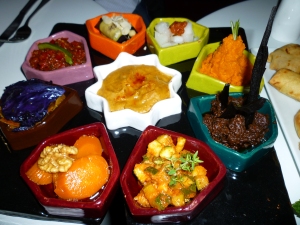
- Moroccan salad mezze at Bab Dar
(c) Lynn Sheppard
Wednesday is the night to hang out in the Chatelain, when the weekly market takes place. On a fine evening, it’s definitely worth popping by, eg after a visit to the nearby Horta Museum – home of the Belgian Art Nouveau architect. Wednesdays are when you’ll spot the double-parked BMWs and Audis as their owners not only do their high-end grocery shopping, but also pause to indulge in some al fresco rosé or tapas. The restaurants in this neighbourhood are top notch (and well reviewed in the guide books) – it’s worth booking in advance if you want to eat there on a Wednesday. If you fancy something a bit more chilled, head over to Bab Dar on Chaussée de Charleroi. Run by the same guys as the hip and funky Kif Kif Café off Place Flagey, Bab Dar is a like Kif Kif’s calmer older sister – a haven of beautifully designed interiors serving up a limited – but excellent – Moroccan menu. I recommend the mezze of Moroccan salads as a starter – it was bursting with intricate flavours and unexpected spice combinations.
Around Place Flagey

sabayaki (grilled mackerel) at Izakaya
(c) Lynn Sheppard
Place Flagey has had a major overhaul in the last decade, which has resulted in the paved open square (previously a frequently flooded building site and/or car park), a new public transport hub and the renovation of the Maison de la Radio, which is now a cultural centre. It still houses a radio station as well as a theatre, a café and a restaurant and is frequently the hub of various festivals and outdoor events. There is a produce market on the square on a Saturday. Around the back of the Flagey building, is Rue du Belvédère, a small street mainly of Portuguese chicken shacks. Avoid them and head to Marché au Vins, a small wine bar and live music venue located in…. a garage. It’s larger (and more sophisticated) than it sounds – the owners used to run a wholesale wine business there and now offer a friendly welcome, a wide variety of wines (by the bottle or the glass) and some small snacks. It’s perfect for a pre- or post-dinner drink.
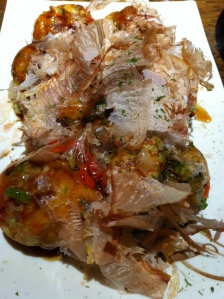
takoyaki (octopus batter balls) at Izakaya
(c) Lynn Sheppard
My favourite, and by far the most authentic, of Brussels’ Japanese restaurants, Izakaya is on Chaussée de Vleurgat, one of the ten streets which converge on the square. This restaurant is the closest I have found to a genuine izakaya (like a Japanese tapas bar) in Europe. They serve all three Japanese mainstream beer brands, excellent Japanese food including sashimi, noodles, fish, yakitori and amazing yaki onigiri (rice patties basted in a sweet soy dressing and grilled). They don’t do sushi – in Japan, sushi is only served in sushi restaurants, not izakaya. Check out the daily specials and, f you know about Japanese food and/or speak Japanese, head off menu – the staff are happy to help!
Around Place St Boniface and Place Ferdinand Cocq
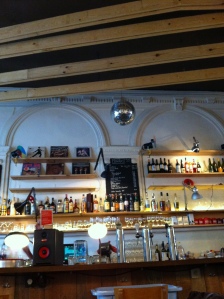
a wide selection of spirits and vinyl at L’Amour Fou
(c) Lynn Sheppard
There are many good restaurants in this area which mixes student shared flats with grandly renovated townhouses for European functionaries. I like L’ultime Atome and Belgo Belge around Place St Boniface. On my recent visit, I visited L’Amour Fou on Place Ferdinand Cocq. It is under new management, so I thought I’d give it a go. Typical of Brussels establishments, it is at once a cafe, a bar and a restaurant. The menu features fresh ingredients prepared on the premises and a focus on burgers. The new management seem to have a minor obsession with music on vinyl and rum. Neither of which is a bad thing. It’s worth a visit if you’re in the neighbourhood.
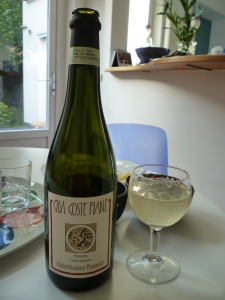
a fine aperitif Prosecco from Titulus
(c) Lynn Sheppard
Further over towards the European Parliament and the Place Luxembourg area (general assembly point of young European expats and interns in the bars flanking the square), I discovered a new wine bar and shop open since September 2011. At Titulus, you can stop off for a glass or two, pick up a bottle on route to a party or buy a range of cutely packaged conserves and pickles such as sardines and antipasti. The staff are knowledgeable and friendly and I was very happy with the Prosecco which they recommended. It’s on the stretch of Chaussée de Wavre just as it leaves Avenue de la Couronne and heads into Matongé, Brussels’ African neighbourhood where you can pick up authentic West and Central African cuisine for a couple of euros.
And the answer to the question on your lips….. Where to buy chocolates?
In Brussels, you are never more than a few feet from a chocolate shop. The big names (e.g. Neuhaus, Leonidas, Godiva and Corné) are on every corner. You can leave it to the airport or the Eurostar lounge, but in my view the best chocolate is worth hunting out. Pierre Marcolini (shops at the Sablon and on Avenue Louise) is the haute couture of Belgian pralines, but since Nestlé bought a large stake in the brand, it no longer has that artisanal feel, although it does still have a certain bling factor. I recommend you buy your chocs from Lorette on Rue Franklin in the EU district. Lorette is super friendly, speaks a handful of languages and brings together various small producers in one cute, artsy shop. Her main praline supplier is Flemish chocolatier Frederic Blondeel, who has his own shop and café Quai aux Briques in the Place St Catherine area (also a good location for fish and seafood restaurants). Blondeel makes the most amazing flavour combinations. His pralines feature ingredients such as thyme, Szechuan pepper, cardamom and ginger. I prefer spicy or citrus to floral or super sweet flavours, so Blondeel’s are my kind of chocolate!
And finally….. sleeping
I am fortunate normally to be able to stay
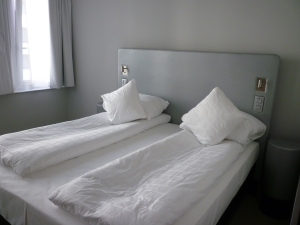
clean, minimalist decor at the Thon Europe
(c) Lynn Sheppard
with generous friends in Brussels, but on a recent trip I tried out the new Thon Europe hotel in the EU district and was very impressed. The decor is modern – the seats in the bar/restaurant are lime, fuchsia and turquoise and the rooms are spacious with clean, minimalist lines. The Thon is super convenient – the location (between the European Parliament and the main European Commission buildings) is excellent, there is a small supermarket onsite, and Apple Macs available for free internet access in the lobby. If you’re in Brussels for work, I’d certainly recommend the Thon. (Note: be careful not to confuse it with their central hotel at Place Rogier when booking!)
Do you know Brussels? What are your tips for a weekend in the Euro-Capital?
(c) Lynn Sheppard

